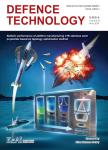Ballistic response of armour plates using Generative Adversarial Networks
Ballistic response of armour plates using Generative Adversarial Networks作者机构:Institute for Infrastructure and Environment(IIE)School of EngineeringThe University of Edinburgh Alexander Graham Bell BuildingThe King's BuildingsEdinburghEH93FGUnited Kingdom School of EngineeringFaculty of ScienceEngineering and Built EnvironmentDeakin University Waurn PondsVictoria3220Australia Data Science and AIEngineeringGroup Chief Information O CeLloyds Banking Group69 Morrison StEdinburghEH38BWUnited Kingdom
出 版 物:《Defence Technology(防务技术)》 (Defence Technology)
年 卷 期:2022年第18卷第9期
页 面:1513-1522页
核心收录:
学科分类:08[工学] 0826[工学-兵器科学与技术]
基 金:supported by the Engineering and Physical Sciences Research Council [grant number: EP/N509644/1]
主 题:Machine learning Generative Adversarial Networks GAN Terminal ballistics Armour systems
摘 要:It is important to understand how ballistic materials respond to impact from projectiles such that informed decisions can be made in the design process of protective armour systems. Ballistic testing is a standards-based process where materials are tested to determine whether they meet protection, safety and performance criteria. For the V50ballistic test, projectiles are fired at different velocities to determine a key design parameter known as the ballistic limit velocity(BLV), the velocity above which projectiles perforate the target. These tests, however, are destructive by nature and as such there can be considerable associated costs, especially when studying complex armour materials and systems. This study proposes a unique solution to the problem using a recent class of machine learning system known as the Generative Adversarial Network(GAN). The GAN can be used to generate new ballistic samples as opposed to performing additional destructive experiments. A GAN network architecture is tested and trained on three different ballistic data sets, and their performance is compared. The trained networks were able to successfully produce ballistic curves with an overall RMSE of between 10 and 20 % and predicted the V50BLV in each case with an error of less than 5 %. The results demonstrate that it is possible to train generative networks on a limited number of ballistic samples and use the trained network to generate many new samples representative of the data that it was trained on. The paper spotlights the benefits that generative networks can bring to ballistic applications and provides an alternative to expensive testing during the early stages of the design process.



